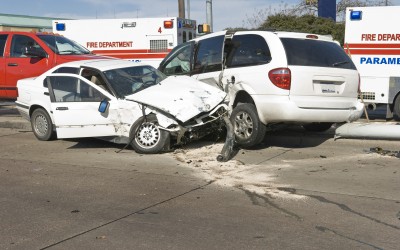7 Common Reasons Why a Home Insurance Claim Could Get Denied
Homeowners purchase homeowner’s insurance policies to protect their investment more fully.
Lenders require insurance coverage to prevent financial losses and prevent a depreciation in value. When filing insurance claims, it is vital to understand the terms of the policies.
Homeowners who need assistance review the 7 common reasons why a home insurance claim could get denied.
#1 Identifying the Wrong Cause
Identifying the wrong cause of the damage leads to a denial of coverage. A general rule of thumb is for the homeowner to hire a contractor to perform an inspection and determine the exact cause of the property damage. Homeowner’s insurance covers a wide spectrum of perils that cause property damage.
By understanding which peril caused the damage, the claims adjuster completes the homeowner’s insurance claim properly.
For example, if a natural disaster, such as a hurricane caused property damage, it is important to determine if the damage was caused by the hurricane itself or the flooding that is often related to the natural disaster.
In this instance, it is vital to differentiate between the two causes because properties that are in a designated flood zone require additional coverage through flood insurance.
If the property is in a flood zone and the ultimate cause of the damage is flooding, the homeowner must file an insurance claim through their flood insurance and not the homeowner’s insurance policy.
Homeowners can learn more about identifying the correct cause for property damage by going to Garrity Insurance right now.
#2 Missing the Deadline
Missing the deadline prevents proper homeowner’s insurance coverage based on the exact terms of the policy. Most homeowner’s insurance policies require the homeowner to file a claim for any property damage within 180 days.
A common mistake that homeowners make is that they assume the 180 days start on the day when the damage is discovered. This isn’t always the case when filing for homeowner’s insurance coverage. There are different scenarios of handling insurance aspects. If you think something is going out of your reach, consider consulting an insurance lawyer. If you wish to know how an attorney helps here, look through this URL here and get all the insights.
Typically, the policies impose a deadline of 180 days starting on the date that the property damage happened. If the homeowner doesn’t find the property damaged until after 180 days, the insurance company can deny the claim.
For example, if a water pipe bursts and water leaks around the basement or foundation, the property owner files a claim on the day it happens or just shortly after.
The reason is that a water leak often leads to the development of mold and mildew due to excessive moisture in damp areas of the property.
If the mold has traveled upward and throughout interior walls or as far as the ceiling, it has clearly been more than 180 days, and most homeowner’s insurance providers won’t provide coverage for mold or mildew remediation services or the cost of repairing property damage caused by mold or mildew.
#3 Coverage isn’t Available for the Damage or the Loss
Knowing the terms of the homeowner’s insurance policy helps property owners determine what events and associated damage are covered under the policy adequately. When buying a home, it is advantageous to consider all risks that could produce property damage.
Standard homeowner’s insurance policies provide coverage for natural disasters, fires, criminal vandalism, and certain water leaks. However, when reviewing risks, the property owner evaluates other risks, too. For instance, if the property is nearby a lake, creek, spring, ocean, or river, it’s in a designated flood zone, and flood insurance is required.
A property in a more humid region of the country where moisture could become a problem requires an add-on policy for coverage for mold and mildew.
If the home has a septic tank, chances are at some point the septic tank will need to be pumped to prevent breakage, and the homeowner needs an additional policy to cover potential flooding or back-ups that lead to environmental risks.
Properties that are located in areas where certain natural disasters are more prevailing, such as hurricanes, tornadoes, or earthquakes need coverage specifically for the natural disaster to acquire enough coverage.
However, if your home has been damaged by severe weather and you do have sufficient coverage, and still your insurance company is failing to pay out, citing the wrong policy terms or other similar issues, it may be time to contact an Insurance Broker Malpractice Attorney. These legal experts can help you recover damages if your insurance was missold or misrepresented by a broker.
Homeowners also neglect to get enough coverage for personal items. Homeowners who have expensive items in their homes, such as jewelry, artwork, antiques, and high-end fashion need add-on policies for the specific items.
Riders are often added to the homeowner’s insurance policies for high-value items that exceed the coverage limitations of a standard policy. An appraisal is needed to cover the items based on their exact value.
If the items are lost, damaged, or stolen, the homeowner has access to proper insurance cover to replace the items without suffering a serious financial loss.
Personal umbrella policies are also helpful for covering personal items and giving the owner more coverage for their personal belongings stored in the property.
#4 Misleading the Insurer About the Extent of the Damage
Misleading the insurer about the extent of the damage leads not only to a denial of coverage, but the homeowner could face criminal charges and hefty fines for insurance fraud.
The first occurrence that is often investigated heavily by a homeowner’s insurance provider is a home fire. The fire is investigated to find the source of the fire and determine if the cause is covered under the terms of the insurance policy.
Any signs of an accelerant such as gasoline inside or outside the property are clear signs of arson. The purpose of the investigation if arson is suspected is to determine if the homeowner set the property on fire or if the homeowner was a victim of an arsonist.
If it is determined that the homeowner started the fire, law enforcement is notified, and the property owner faces insurance fraud charges.
Another instance to be aware of is when a homeowner causes more damage after a natural disaster or fire. The damaged property is inspected after each peril is reported to the insurance provider.
For example, after a hurricane, the inspector reviews the path of the hurricane and how it struck the property. If the damage is prevailing on one side of the property only, it is less likely that any damage that wasn’t caused by the path of the storm would be covered in the claim.
For example, if it is obvious that the homeowner busted out an additional window or demolished a portion of the home causing damage that clearly wasn’t caused by the hurricane, the homeowner is reported for fraud.
#5 A Failure to Pay the Premiums on Time
A failure to pay the premiums prevents any access to homeowner’s insurance coverage. The homeowner is required to pay all premiums on or before the due date designated by the insurer.
If the homeowner didn’t pay the premium on time and prior to filing a claim, the homeowner’s insurance provider can refuse to cover any damage that occurred within the same month. Most homeowner’s insurance providers keep a close eye on incoming payments and process the payment as soon as they arrive.
On the other hand, if the property owner can prove that the payment was submitted and wasn’t credited to their account on time due to employee errors the claim will be processed, and coverage is available.
#6 The Cost of the Repair is Less Than the Deductible
If the cost of the repair is less than the deductible, the homeowner’s insurance policy won’t provide any coverage for the property damage.
However, if the property owner filed a separate claim within the same year and paid their deductible, it is still possible to get insurance coverage.
But, a general rule of thumb for most homeowners is that if the property damage is $800, and the premium is over $1,000 for the year, the policy won’t cover the damage, and the homeowner must pay the expenses out of pocket.
Homeowners are advised to review the terms of their homeowner’s insurance policies before filing an insurance claim to prevent any sudden surprises.
Staying educated about the policy helps the homeowner avoid mistakes and file claims only when it is necessary. It is a known fact that if the homeowner files a claim for any property damage and gets coverage, the insurance premiums increase according to the total cost of repairing the damage or replacing the home.
#7 The Damage is Due to Traditional Wear and Tear
If the damage is due to traditional wear and tear, the homeowner won’t receive coverage for the damage and will need to pay the costs themselves.
For example, roofing isn’t guaranteed to last throughout the property owner’s lifetime in most cases. If the roofing is damaged due to a storm, the homeowner has access to coverage through the homeowner’s insurance policy, but if the damage is just standard wear and tear, the claim is denied.
Homeowners are advised to review add-on policies when protecting the home and fixtures installed on or directly connected to the home.
Garages, for example, aren’t covered under every homeowner’s insurance policy. Some policies restrict coverage if the garage isn’t built into the side of the property and connected to a living space, such as a kitchen.
Homeowners who review the fine print know what to expect from their homeowner’s insurance policies. When necessary, the property owners make necessary changes and purchase add-on policies to prevent financial losses. Knowing the exact terms of the policies lowers the risk of a denied insurance claim.






